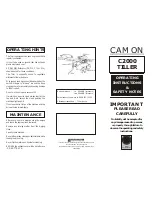
Ma
Int
E
nan
CE
Maintenance
70
English
Maintaining plate type heat
exchanger
f
When the product was not operated for long period
of time, check the followings:
- Check the water to see if the water quality is
meets the standard.
- Clean the strainer.
- Check to see if there is enough amount of flow
rate.
- Check to see if there is any problems on
the water pressure, flow rate and the water
temperature at inlet/outlet.
- If you are using ground heat source, make sure to
check the concentration level of the anti-freeze
before the operation to maintain the freezing
point at below -8 °C. (Refer to page 76 for brine
freezing point graph.)
f
Plate type heat exchanger is designed in an
impossible way to disassemble part for cleaning.
Therefore it has to be cleaned by following methods.
- Check if there is any cleaning hole for chemical
cleaning at the inlet water pipe. For water scale
cleaning use diluted (down to 5 %) citric acid,
oxalic acid, acetic acid, phosphoric acid. However,
do not use a cleaning solution containing
hydrochloric acid, sulfuric acid or nitric acid since
they are highly corrosive.
- Check if there is valve on the inlet/outlet of the
plate type heat exchanger.
- Connect an exclusive pipe for cleaning to the
inlet/outlet pipe of the plate type heat exchanger
and fill the detergent at the temperature of
50 ~ 60˚ C and circulate the detergent for about
2 ~ 5 hours. Cleaning time can be different
depending on the temperature of detergent or
degree of water scale. Judge the degree of water
scale removal by the color of water detergent.
- After cleaning, discharge the detergent within
the plate type heat exchanger and fill the plate
type heat exchanger with a water mixed with
1 ~ 2 % of sodium hydroxide (NaOH) or sodium
bicarbonate (NaHCO
3
). Circulate the water
mixture for 15 ~ 20 minutes to neutralize.
- After neutralizing the pipes, rinse the plate type
heat exchanger with distilled water.
- If you are using the detergent sold at local
retail stores, make sure that it doesn't cause any
corrosion to the stainless steel or copper.
- For detail information on cleaning method (and
proper use of detergent), contact the detergent
manufacturer.
f
After cleaning, check to see if it is possible to operate
normally.
DB68-05916A-09_IM_DVM Chiller Outdoor_EU_EN_.indd 70
2022-05-02 오전 9:00:14
















































